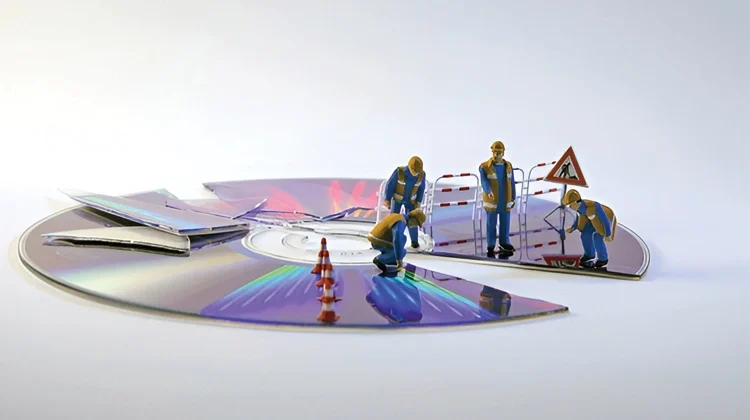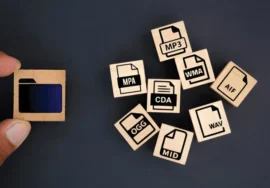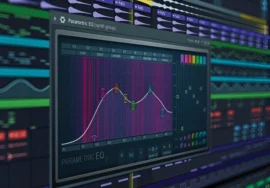
Bringing History Back to Life
Audio restoration is a fascinating process that involves the meticulous cleaning and enhancement of degraded or damaged audio recordings. By employing advanced techniques and specialized software, audio restoration specialists can breathe new life into historical recordings, preserving them for future generations.
The Importance of Audio Restoration
Audio recordings are invaluable artifacts that capture moments in time, preserving voices, music, and soundscapes for posterity. However, over time, these recordings can deteriorate due to various factors such as age, poor storage conditions, and the inherent limitations of the recording medium.
Audio restoration plays a crucial role in preserving our cultural heritage by rescuing these damaged recordings. It allows us to reconnect with the past, learn from history, and appreciate the artistry and craft skills of earlier generations.
Common Audio Restoration Techniques
Audio restoration specialists employ a range of techniques to address various audio imperfections. Some of the most common techniques include:
- Noise Reduction: This technique involves reducing or eliminating unwanted background noise such as hiss, hum, and crackle. It is achieved by analyzing the audio signal and identifying the noise patterns, which are then selectively attenuated.
- Click and Pop Removal: Clicks and pops are common artifacts in vinyl recordings caused by scratches and dust particles. These can be removed using advanced algorithms that detect and eliminate these transient noises.
- Equalization: Equalization is used to adjust the frequency balance of a recording, compensating for any deficiencies in the original recording or playback equipment. This can help to improve clarity, warmth, and overall sound quality.
- Time Stretching and Pitch Correction: These techniques allow for the manipulation of the tempo and pitch of a recording, which can be useful for synchronizing audio with video or correcting performance errors.
- Restoration of Missing or Damaged Sections: In some cases, portions of a recording may be missing or severely damaged. Advanced restoration techniques can be used to reconstruct these missing sections, often by synthesizing new audio based on the surrounding context.
The Process of Audio Restoration
The audio restoration process typically involves the following steps:
- Initial Assessment: The audio restoration specialist begins by carefully assessing the condition of the recording, and identifying any damage or degradation.
- Cleaning and Preparation: The recording is cleaned to remove any physical dirt or debris that may affect the sound quality.
- Digital Transfer: The recording is transferred to a digital format, which allows for precise manipulation and analysis.
- Noise Reduction and Restoration: The specialist applies the appropriate techniques to remove noise, clicks, pops, and other imperfections.
- Equalization and Mastering: The audio is equalized to optimize the frequency balance and overall sound quality. Mastering techniques may also be applied to enhance the recording’s dynamic range and loudness.
- Final Output: The restored audio is exported in a high-quality format, ready for archiving, distribution, or public performance.
The Role of Audio Restoration in Modern Media
Audio restoration isn’t just about preserving history; it’s also a crucial tool in modern media production. Here are some key areas where audio restoration is making a significant impact:
- Film and Television:
- Remastering Classic Films: Restoring old film soundtracks can enhance the viewing experience, making classic films sound as good as they look.
- Creating High-Quality Reissues: By cleaning up and remastering original audio, studios can release high-quality reissues of films and TV shows.
- Music Production:
- Restoring Vintage Recordings: Old vinyl records, cassette tapes, and reel-to-reel tapes can be restored to pristine condition, allowing for high-quality digital reissues.
- Creating Unique Sounds: Audio restoration techniques can be used to create unique sounds and effects for modern music production.
- Podcasts and Audiobooks:
- Improving Sound Quality: By removing background noise and other imperfections, audio restoration can significantly enhance the listening experience for podcasts and audiobooks.
- Video Games:
- Remastering Classic Games: Restoring the original soundtracks of classic video games can bring back nostalgic memories and enhance the gaming experience.
Challenges and Considerations in Audio Restoration
While audio restoration is a powerful tool, it also presents several challenges:
- Time-Consuming Process: Restoring audio can be a time-consuming process, especially for large or complex projects.
- Technical Expertise: Audio restoration requires specialized knowledge and skills, as well as access to advanced software and hardware.
- Ethical Considerations: When restoring historical recordings, it’s important to maintain the integrity of the original sound.
- Cost: Professional audio restoration services can be expensive, especially for large-scale projects.
The Future of Audio Restoration
As technology continues to advance, we can expect to see even more innovative and effective audio restoration techniques. Artificial intelligence and machine learning are already being used to automate certain aspects of the restoration process, making it faster and more efficient.
Additionally, there is a growing interest in open-source audio restoration tools, which are making these techniques accessible to a wider audience. This democratization of audio restoration is empowering individuals and organizations to preserve and share their own audio heritage.
Conclusion
Audio restoration is a vital process that allows us to preserve our cultural heritage and connect with the past. By carefully cleaning, enhancing, and restoring damaged recordings, we can bring history back to life and share it with the world.





